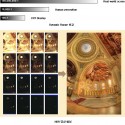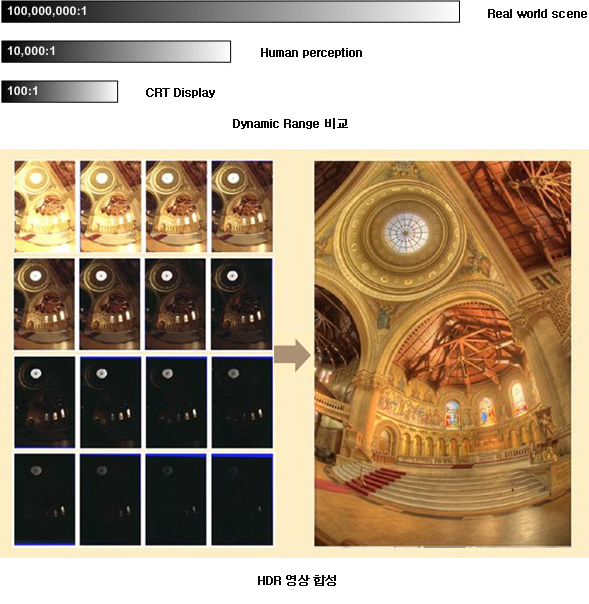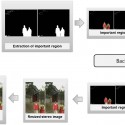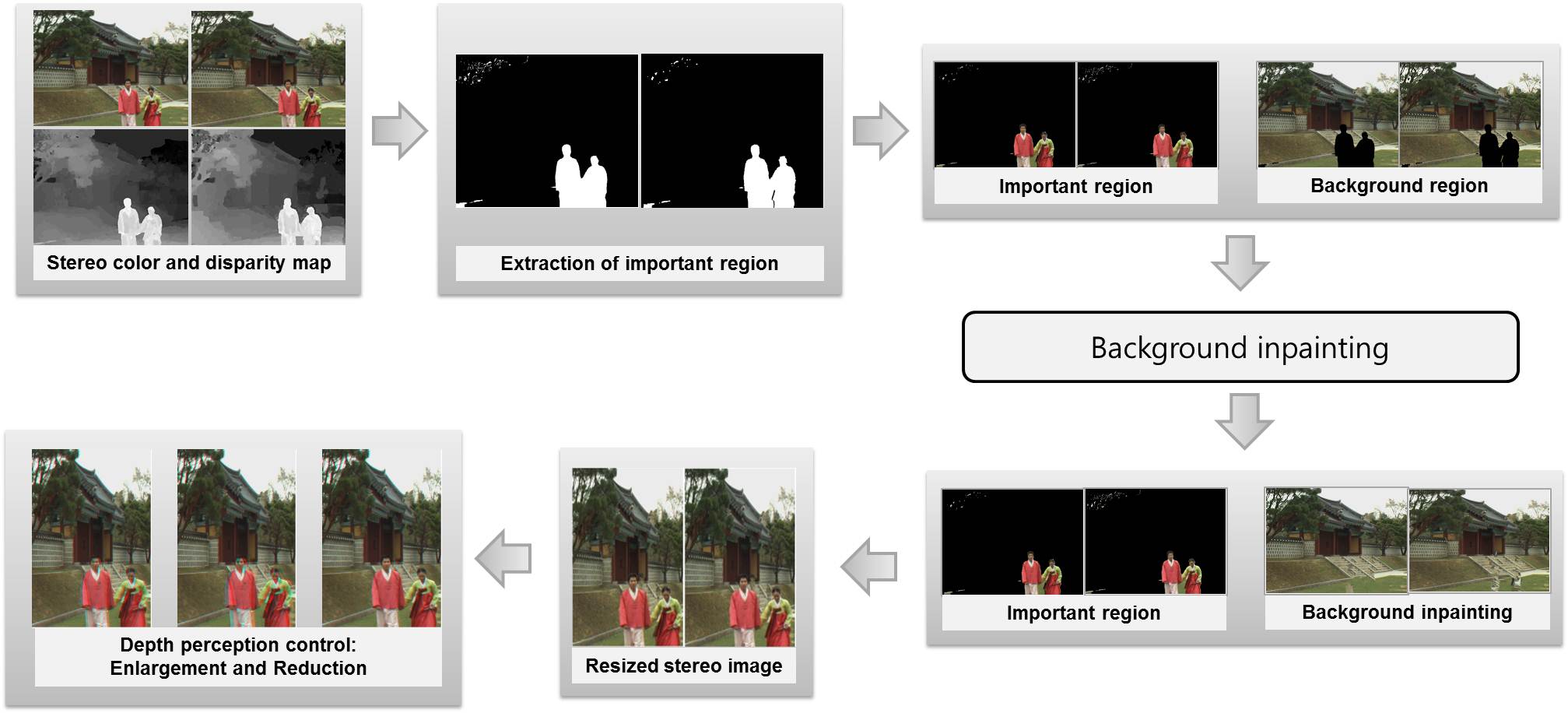
디지털 영상의 동적 영역(Dynamic Range)은 영상 내에서 가장 밝은 화소값과 가장 어두운 화소값의 비율로 정의한다. 일반적인 디지털 카메라 및 모니터는 2의 차수 크기의 동적 영역을 다룰 수 있는데 반해, 실제 인간의 시각 인지 시스템(HVS)은 5 이상 차수 크기의 동적 영역을 인지할 수 있다. 따라서, 기존의 영상 장치는 인간이 인지하는 영상을 그대로 획득(capture) 또는 표현(display) 할 수 없다. 이처럼 기존의 영상 장치가 다룰 수 있는 것보다 큰 동적 영역을 갖는 영상의 필요성이 대두되며, 이러한 영상을 높은 동적 영역(High Dynamic Range, HDR) 영상이라고 한다. HDR 영상은 디스플레이 장치가 표현할 수 있는 영상이 아닌 인간이 인지하는 그대로의 영상을 획득할 수 있어, 기존의 낮은 동적 영역(Low Dynamic Range, LDR) 영상에 비해 더 사실적인 장면을 나타낼 수 있다. 이처럼 많은 장점을 가지고 있는 만큼, 디지털 영상 장치의 발전과 더불어 가까운 미래에는 HDR 영상의 사용이 일반화 것으로 예상된다. 본 연구실에서는 이와 관련하여 다음과 같은 연구를 진행하고 있다.
- HDR 영상 및 동영상 획득 알고리즘
- HDR 영상 및 동영상 압축에 관한 연구
- HDR 영상을 기존의 LDR 디스플레이 장치에 표시하기 위한 알고리즘
 The dynamic range of a digital image is defined as the ratio of the intensities between the brightest pixel and the darkest pixel. While the dynamic ranges of conventional display devices are less than two orders of magnitude, real world scenes have much higher dynamic ranges. Also, human eyes can perceive more than six orders of magnitude via adaptation. Images that have higher dynamic ranges than conventional display devices are called high dynamic range (HDR) images. As the HDR images represent what human perceives rather than what display devices can express, they can capture real gamut more faithfully than low dynamic range (LDR) devices. The recent advance of sensor technology makes it possible to record the full dynamic range of a scene in a single shot. It is also expected that general still or video cameras will be able to capture HDR scenes directly in near future. We are doing researches on
The dynamic range of a digital image is defined as the ratio of the intensities between the brightest pixel and the darkest pixel. While the dynamic ranges of conventional display devices are less than two orders of magnitude, real world scenes have much higher dynamic ranges. Also, human eyes can perceive more than six orders of magnitude via adaptation. Images that have higher dynamic ranges than conventional display devices are called high dynamic range (HDR) images. As the HDR images represent what human perceives rather than what display devices can express, they can capture real gamut more faithfully than low dynamic range (LDR) devices. The recent advance of sensor technology makes it possible to record the full dynamic range of a scene in a single shot. It is also expected that general still or video cameras will be able to capture HDR scenes directly in near future. We are doing researches on
- Capturing of HDR images and videos
- Compression of HDR images and videos
- Displaying HDR images on LDR devices




Recent Comments